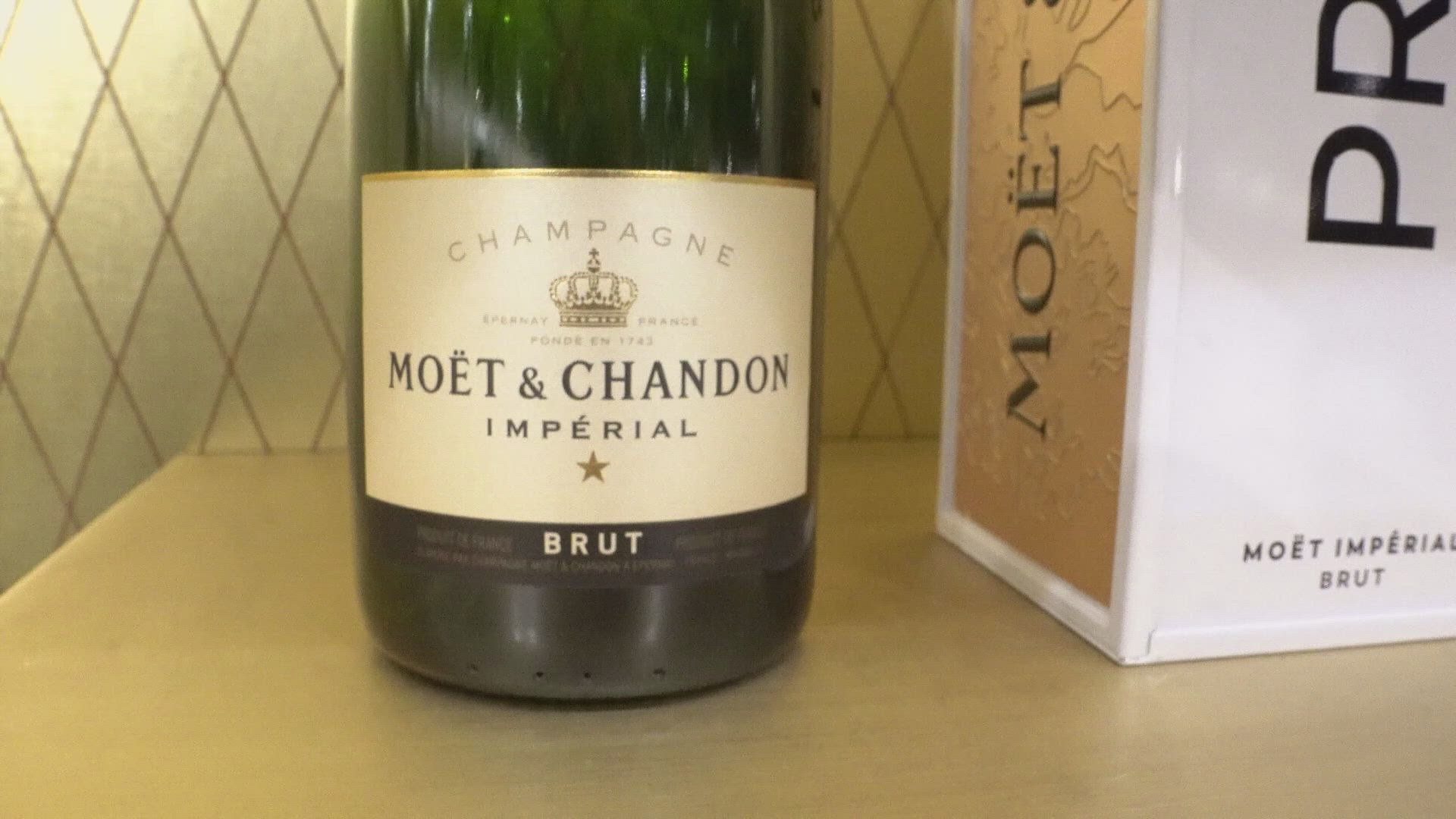ÉPERNAY, France — The Champagne region of France is the only place wine can legally be called champagne. It’s a 100-mile area that includes the vineyards and cellars of Moet Champagne, the official champagne of the 2024 Olympics and one of the world’s largest champagne producers.
Moet is located in the quiet town of Epernay, but there are a lot of companies in the area that make champagne. Moet has nearly 3,000 acres of vineyards that produce 28 million bottles of champagne a year.
Lena Perrein grew up surrounded by champagne and now works for Moet.
“This is where part of the magic happens. We have people working the vines all over the year,” Perrein said. "It is a unique place around the globe where we can produce champagne. I think the name champagne is famous all over for celebration for people's best moments in life.”
The rich soil in France helps make the champagne special and unique to this region of the world.
“Turns out we have chalk limestone soil,” Perrein said. “The ocean we had in this region millions of years ago left minerals and sediments and that gives the minerals to our champagnes.”
Making a bottle takes time. It’s a 3 year process that starts in the vineyards before heading underground to the cellars of Moet, where there are miles of dark, cool tunnels filled with champagne.
“This is the largest cellar of champagne around the globe,” Perrein said. “We have 17 miles of cellars filled with our bottles.”
Millions of bottles of champagne are stored in galleries that hold thousands of bottles of various sizes. A small gallery about the size of a tool shed can hold 5,000 bottles that are aging and glow green.
“Every bottle contains a sediment. It's called lees,” Perrein said. “It appears right after the birth of the bubbles and these lees are magic.”
The sediment, created from the yeast after fermentation, is eventually removed, and the champagne is ready.
There are some bottles that have been aging in the cellar for more than 100 years.
“This cellar is 280 years old. Napoleon [Bonaparte] visited the cellars," Perrein said. “We tend to keep older vintages and the oldest bottle we have is from 1869.”

